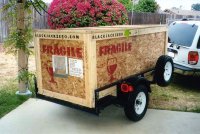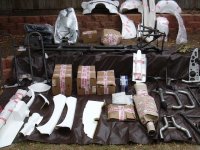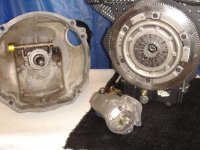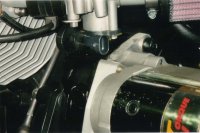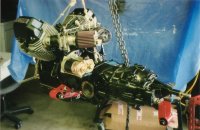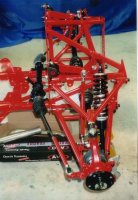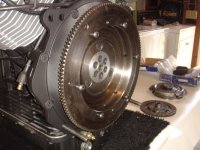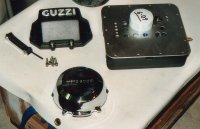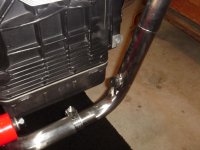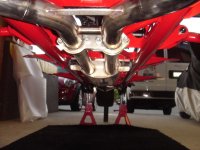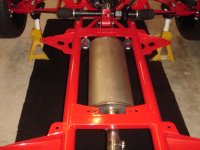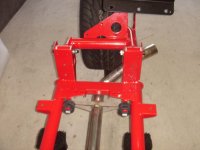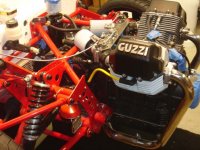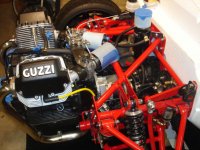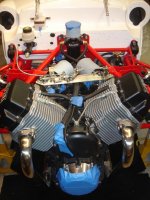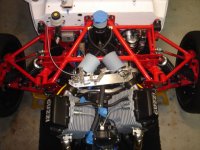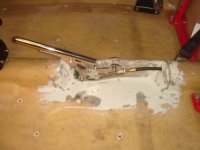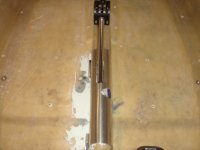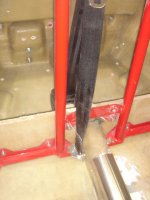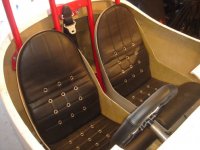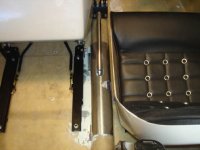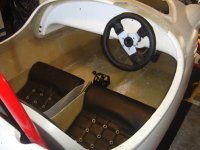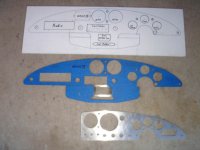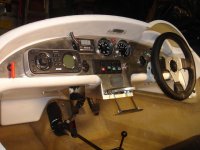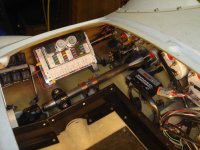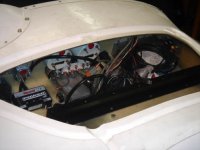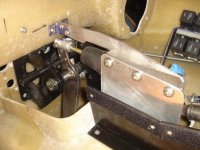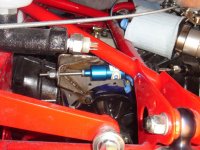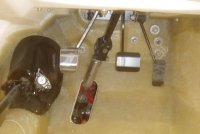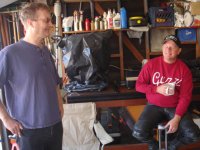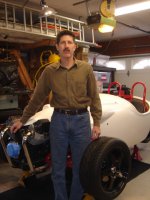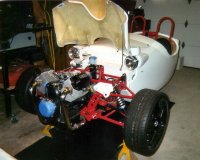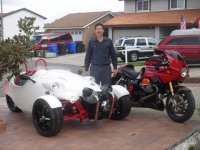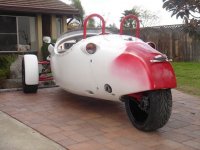From our good San Diego friend Kurt Vogt
The Making of a Moto Guzzi Car
Part 1
After typing this title I thought, wouldn't it be awesome if Moto Guzzi produced a car using their venerable engine? I think it would stun the world. It certainly would astonish me, but I'm not waiting for that debut. Hello, my name is Kurt Vogt. I've been a member of the MGNOC since 1988. I've always enjoyed this newsletter (thanks Frank), people and of course, our marquee. I'm a mechanic and builder at heart. You won't see me writing much because I'd rather be in the garage doing what I enjoy most.
I currently have the time and funds to finally do what I've thought about for years, build a Guzzi car. There are a few events that have persuaded me to start this project. I just can't take my beloved V11 Rosso Corse more than 500 miles a day anymore without causing serious discomfort to myself and wife. The spare touring seat helped my rear, but not my bad shoulder. For short fast rides though, it's the cat's meow. My wife and I would often take rides before we had children. Now our children are almost out of the house and I would like to resume this courtship. Rather than buy a touring Guzzi I prefer the added comfort and uniqueness of a Guzzi car.
For years, I've had my eye on the company John Ziemba Restorations, JZR, which makes Morgan 3 wheel replicas, but never knew much about them. Now that I know a little more I decided that they aren't for me. I don't want to discourage anyone who is considering building a JZR. They're a fine car if you want to copy old technology and style. I personally love the old style, but not the old technology. I've been building, fixing, maintaining and designing stuff all my life. I know what makes a design good or bad. I prefer the benefits of new technology even though it's more complicated.
I wanted to use a newer 1100 or 1200cc fuel injected engine for my project. I want new technology and more power to propel more weight. JZRs only accept 950cc carbureted Guzzi engines. OK, I could buy the kit then cut and chop, but that's like throwing money away. I also wanted to use the newer transmission and rear end. There's more cutting and chopping. It also bothers me that an added starter motor is used on the drive shaft to obtain reverse. I could make a car from scratch, but don't want to reinvent the wheel if I don't have to.
I found one other company that uses a VW bug or 1100cc Guzzi carbureted motor to power a 3 wheel, front wheel drive, reverse trike. This company's approach to engineering is quite different. They are not trying to copy a Morgan and use newer technology. Notice I said "newer" because they haven't yet reached the fuel injection threshold. This company is called BlackJack in Britain and owned by Richard Oakes. On his site you will see a car that looks nothing like a Morgan, but retains the beauty and thrill of an open touring car for two. His kit car is broken down into sub kits. You can purchase all systems or only the ones that you want. This is in contrast to the JZR which is, all-or-nothing. Both the JZR and Black Jack Zero are one man companies. The JZR is all built in-house. It could easily be a year before you see your kit. Black Jack Zero is all subcontracted so all the company does is take customer orders, order kits from contractors, package and ship. In my case the time from ordering to shipping was 4 months.
Now, what to do while you wait for your bundle of joy? There are a few important pieces of the puzzle that do not come with the kit even if you order all sub kits. Oh, I forgot to mention, you should first check with the wife and bank account before proceeding! In most cases it's a one stop begging process. This might be a good time to bring home some flowers and take her out for dinner or start enlarging your dog house. From here the adventure gets pretty deep. This might be a good time to break for a part two.
Good luck with the bank,
Kurt
The Making of a Moto Guzzi Car
Part 1
After typing this title I thought, wouldn't it be awesome if Moto Guzzi produced a car using their venerable engine? I think it would stun the world. It certainly would astonish me, but I'm not waiting for that debut. Hello, my name is Kurt Vogt. I've been a member of the MGNOC since 1988. I've always enjoyed this newsletter (thanks Frank), people and of course, our marquee. I'm a mechanic and builder at heart. You won't see me writing much because I'd rather be in the garage doing what I enjoy most.
I currently have the time and funds to finally do what I've thought about for years, build a Guzzi car. There are a few events that have persuaded me to start this project. I just can't take my beloved V11 Rosso Corse more than 500 miles a day anymore without causing serious discomfort to myself and wife. The spare touring seat helped my rear, but not my bad shoulder. For short fast rides though, it's the cat's meow. My wife and I would often take rides before we had children. Now our children are almost out of the house and I would like to resume this courtship. Rather than buy a touring Guzzi I prefer the added comfort and uniqueness of a Guzzi car.
For years, I've had my eye on the company John Ziemba Restorations, JZR, which makes Morgan 3 wheel replicas, but never knew much about them. Now that I know a little more I decided that they aren't for me. I don't want to discourage anyone who is considering building a JZR. They're a fine car if you want to copy old technology and style. I personally love the old style, but not the old technology. I've been building, fixing, maintaining and designing stuff all my life. I know what makes a design good or bad. I prefer the benefits of new technology even though it's more complicated.
I wanted to use a newer 1100 or 1200cc fuel injected engine for my project. I want new technology and more power to propel more weight. JZRs only accept 950cc carbureted Guzzi engines. OK, I could buy the kit then cut and chop, but that's like throwing money away. I also wanted to use the newer transmission and rear end. There's more cutting and chopping. It also bothers me that an added starter motor is used on the drive shaft to obtain reverse. I could make a car from scratch, but don't want to reinvent the wheel if I don't have to.
I found one other company that uses a VW bug or 1100cc Guzzi carbureted motor to power a 3 wheel, front wheel drive, reverse trike. This company's approach to engineering is quite different. They are not trying to copy a Morgan and use newer technology. Notice I said "newer" because they haven't yet reached the fuel injection threshold. This company is called BlackJack in Britain and owned by Richard Oakes. On his site you will see a car that looks nothing like a Morgan, but retains the beauty and thrill of an open touring car for two. His kit car is broken down into sub kits. You can purchase all systems or only the ones that you want. This is in contrast to the JZR which is, all-or-nothing. Both the JZR and Black Jack Zero are one man companies. The JZR is all built in-house. It could easily be a year before you see your kit. Black Jack Zero is all subcontracted so all the company does is take customer orders, order kits from contractors, package and ship. In my case the time from ordering to shipping was 4 months.
Now, what to do while you wait for your bundle of joy? There are a few important pieces of the puzzle that do not come with the kit even if you order all sub kits. Oh, I forgot to mention, you should first check with the wife and bank account before proceeding! In most cases it's a one stop begging process. This might be a good time to bring home some flowers and take her out for dinner or start enlarging your dog house. From here the adventure gets pretty deep. This might be a good time to break for a part two.
Good luck with the bank,
Kurt



